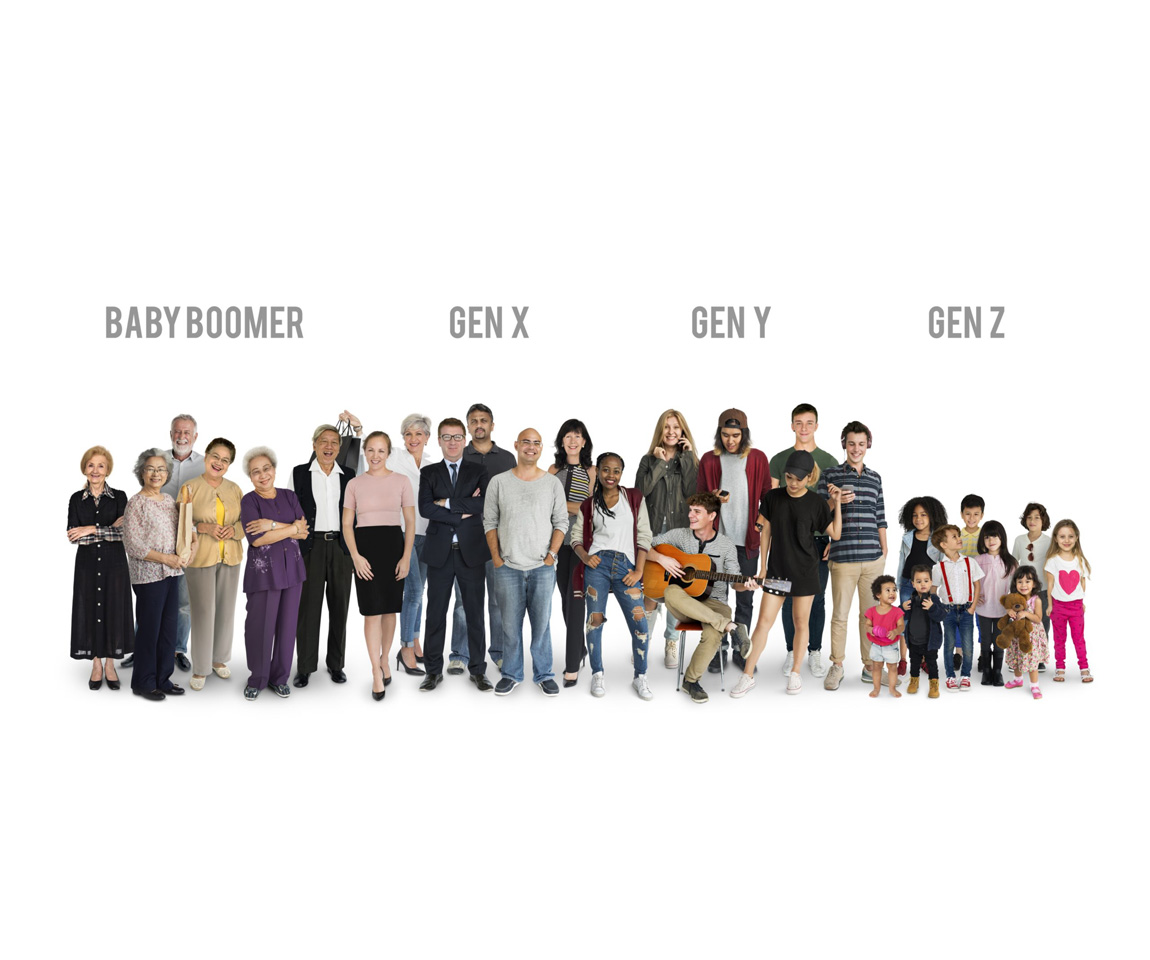So who are we really talking about when we’re talking about consumer generations?
A great deal of brainstorming and research goes into understanding consumers’ generational tendencies. It’s crucial to learning how to tailor messages, products, and marketing approaches to each age group as precisely as possible. But when it comes to generations, there’s hardly any precise agreement on as basic a question as where each one begins and ends. If you ask the U.S. Census Bureau who Millennials are, for example, you’ll get a different answer than if you ask the respected, nonprofit and nonpartisan Pew Research Center.
With that in mind, here’s how some experts are tracking America’s important but apparently moving generational targets.
Millennials:
- The Census Bureau says they were born between 1982 and 2000, meaning that as of Dec. 31, 2017 they’ll all be 17 to 35.
- A Pew Millennial is older than a Census Bureau Millennial – Pew says this generation was born between 1981 and 1997, making its members 20 to 36 years old.
- Jean Twenge, a professor at California State University, San Diego (and author of books profiling Millennials and the younger Gen Z) thinks the Millennials are older still – born between 1980 and 1994, making them 23 to 37 this year.
Gen Z
- The Census Bureau thinks they’ve been born since 2001, making the oldest Zers 16 years old.
- Pew identifies them as 19 and under.
- Twenge, who calls them iGen because they’re the first generation that’s come to awareness in the Smartphone Era and can’t remember a time before the internet, pegs them as the cohort born between 1995 and 2012, making them 5 to 22.
Gen X
- The Census Bureau says they’re 36 to 52 this year; Pew classifies them as 37 to 52, and Twenge says 38 to 52.
Baby Boom
- The three experts agree on the Boomers: they are 53 to 71 this year, having been born between 1946 and 1964. Those years are clear historical markers: 1946 saw veterans of World War II returning from the fighting and eagerly getting on with family life, and 1964 was the year of the Gulf of Tonkin Resolution that escalated U.S. involvement in the Vietnam War – just as the oldest Boomers were turning 18 and thus eligible to be drafted to fight in it.
If merely defining the generations by their birth years is an uncertain business, what does that say about the challenges of understanding them as consumers? One way to start is by embracing the vast research potential of the technology that brings all four major consumer generations together: their smartphones. Getting mobile research right becomes increasingly important as each generation grows increasingly tethered to this century’s definitive technology. More than 90% of Americans who are approximately 20 to 30 have smartphones or tablets; the Gen Zers coming up behind them are all but inseparable from their phones, making the smartphone their primary window on the world.
Knowing today’s consumers requires realizing that the ground is shifting, and that going forward it will take a full immersion in mobile research to identify and interpret shifts in how the generations are living, thinking, behaving, shopping and buying. For a productive conversation about how you can get ahead of the curve and meet your specific projects’ needs with a proprietary U.S. panel gathered eagerly around a mobile research app, just contact us at solutions@mfour.com.



